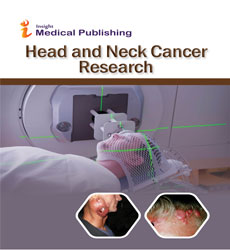Abstract
The efficiency of two-week wait referrals for suspected head and neck cancer
Laryngeal cancer is primarily a disease of middle aged men. It has peak incidence in the seventh decade. It is relatively uncommon in women. It is the common head and neck cancer worldwide. Squamous cell carcinoma is by far the most common type of tumor, comprising 90 percent or more of all laryngeal malignancies. Laryngeal cancer is more common in areas with higher levels of social deprivation. Over 70 large case control studies covering most of the world populations have examined the etiology of squamous cell laryngeal cancer to be tobacco and alcohol. Occupational hazards are associated with the exposure to asbestos, strong inorganic acid, cement dust, silica. Diet rich in salted meat, high total fat content has increased risk of laryngeal malignancy. Intake of plant food, fruits, legumes are protective against laryngeal cancer. The international agency for research on cancer (IARC) has estimated that around 89,000 deaths due to this cancer in males and 12,000 among females worldwide in 2005. Survival rates are lower in developing countries. In a study in India the five year relative survival rates were 58.3% for glottis cancer and 31.4% for supraglottic cancers. Cancer larynx is largely a preventable disease. The risk of cancer is decreased by cessation of smoking and alcohol, as well as reduction in carcinogen exposure in occupational settings. The risk diminishes dramatically only after 6 years of cessation of smoking and approaches that of nonsmoker after 15 years. Early diagnosis is the key to survival and cure rate. This is a hospital based prospective study to find out the common clinical presentation of patients with laryngeal carcinoma with reference to the age profile, the symptomatology, disease stage, etiological factors, occupational history, histological profile and to determine the treatment modalities offered to the laryngeal cancer patients attending ENT OPD at GRH, Madurai. In our study most of them were male patients. The most common age group is 65 years. We had only 4 female patients in our study and all had supraglottic growth. All the patients belonged to low socioeconomic strata. The most common part of larynx involved is supraglottis. None of our patients had distant metastasis. The most common presentation was difficulty in breathing and stridor, later followed by change of voice and dysphagia. The common histopathological finding was squmous cell carcinoma. In that moderatelty differentiated was the most common type. The most common stage was stage 3. The most common treatment offered at our hospital was concurrent chemoradiotherapy.
Author(s):
Mahmoud Al Aaraj
Abstract | PDF
Share this

Google scholar citation report
Citations : 28
Head and Neck Cancer Research received 28 citations as per google scholar report
Abstracted/Indexed in
- Google Scholar
- JournalTOCs
- China National Knowledge Infrastructure (CNKI)
- WorldCat
- Publons
- Secret Search Engine Labs
Open Access Journals
- Aquaculture & Veterinary Science
- Chemistry & Chemical Sciences
- Clinical Sciences
- Engineering
- General Science
- Genetics & Molecular Biology
- Health Care & Nursing
- Immunology & Microbiology
- Materials Science
- Mathematics & Physics
- Medical Sciences
- Neurology & Psychiatry
- Oncology & Cancer Science
- Pharmaceutical Sciences


